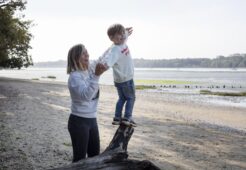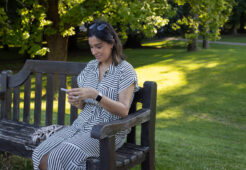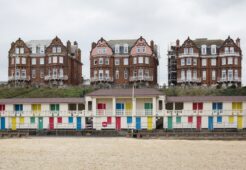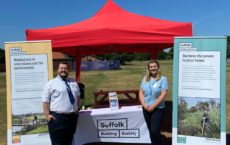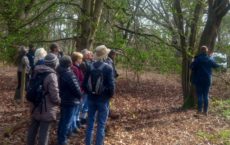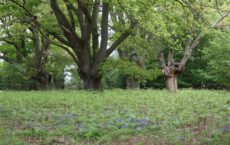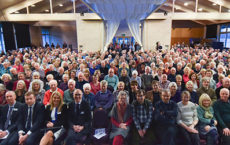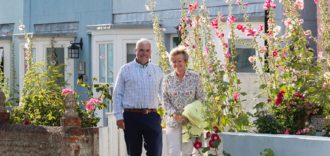Last week we held our first member event to Sutton Hoo and I’m ashamed to say it was my first visit too, despite having lived in Suffolk all my life. I had been put off visiting by someone who said the site was ‘just some grass mounds’. Admittedly that comment was made before the visitor centre and exhibition hall were built, but how wrong that turned out to be. Yes, there are grass mounds – around 18 to be more precise – but the significance of these mounds was made astoundingly clear by Jonathon, our learned National Trust guide for the morning.
After welcoming our members, we had 30 minutes to browse around the exhibition hall, which really helped us to appreciate the magnitude and importance of the Sutton Hoo estate. You couldn’t help but wonder about life in the seventh century; historians strongly suspect that Sutton Hoo was the cemetery for the royal dynasty of East Anglia, the Wuffingas, who claimed descent from the god Woden.
Our walk focussed around Mound One, where a 90 foot Anglo-Saxon ship burial was found in 1939 – the richest burial ever found in northern Europe. The self-taught archaeologist, Basil Brown, employed by the estate owner Annie Tranmer, unearthed what is believed to have been the grave of King Raedwald, a great King of East Anglia, who died in 695AD. Mound One (and Mound 17) were the only two mounds which weren’t robbed of the treasured possessions buried with their owner. These artefacts are now in the British Museum, with some replicas in the estate’s Exhibition Hall.
There was so much more to see and explore which many of our members took advantage of after enjoying complimentary tea and coffee in the onsite café.
There are 245 acres to explore at Sutton Hoo, including Tranmer House, and I would encourage you to visit. The estate is closing on 30 September while the National Trust transform the visitor’s experience to the tune of £4m. It is expected to re-open next Spring, when I for one, will be visiting again, as well as arranging another member event visit.


